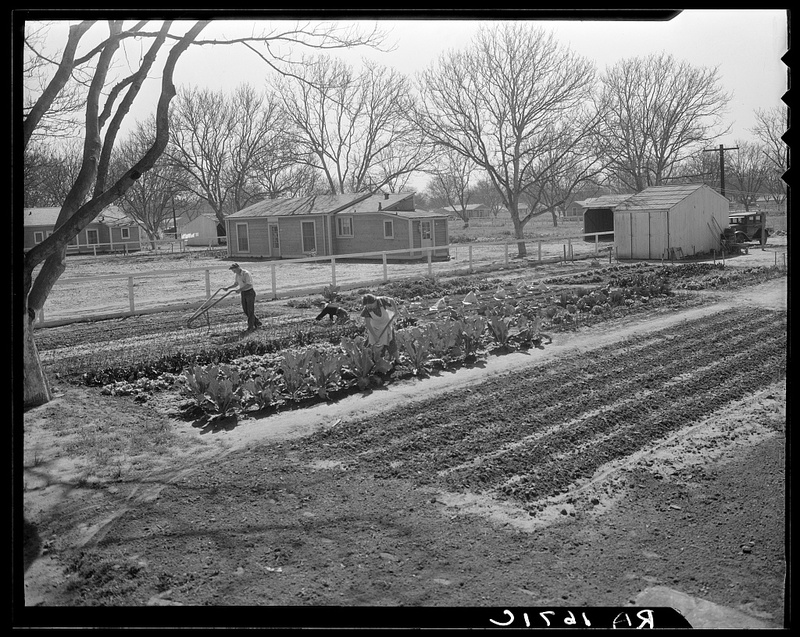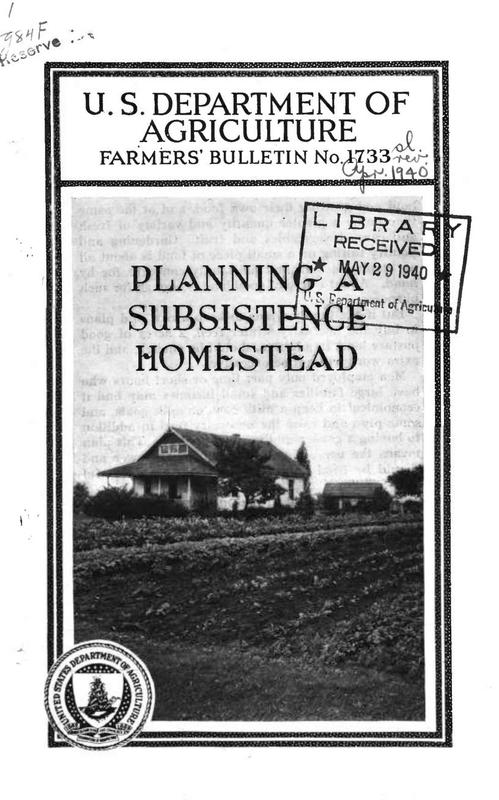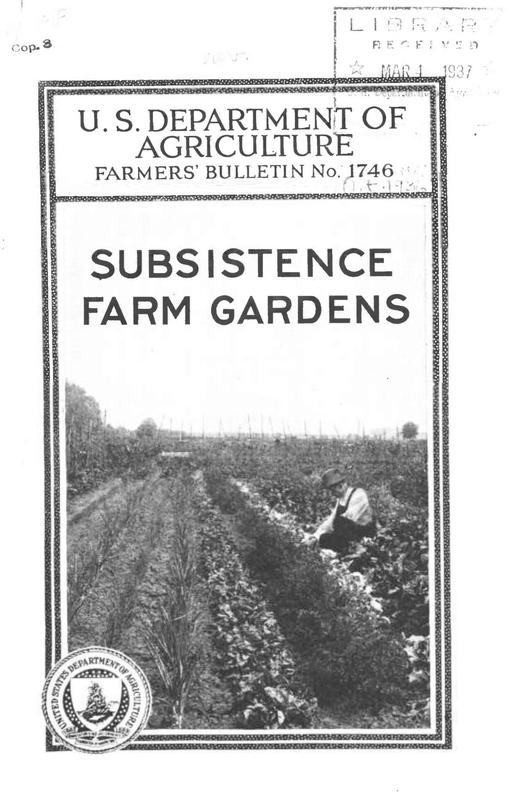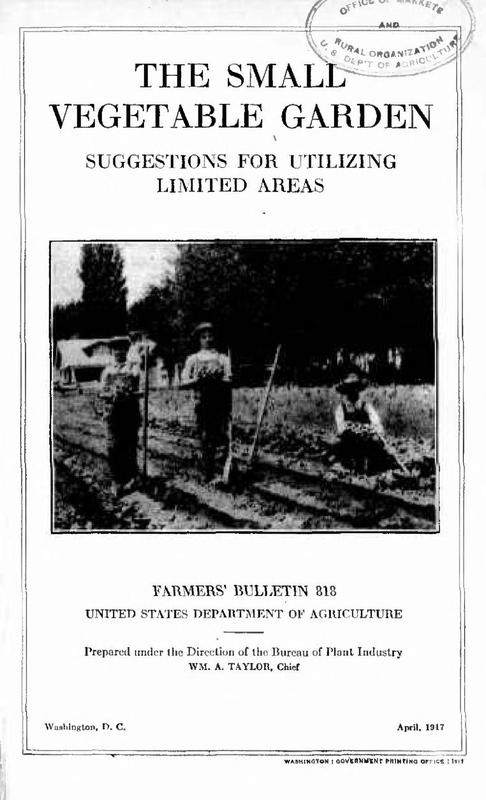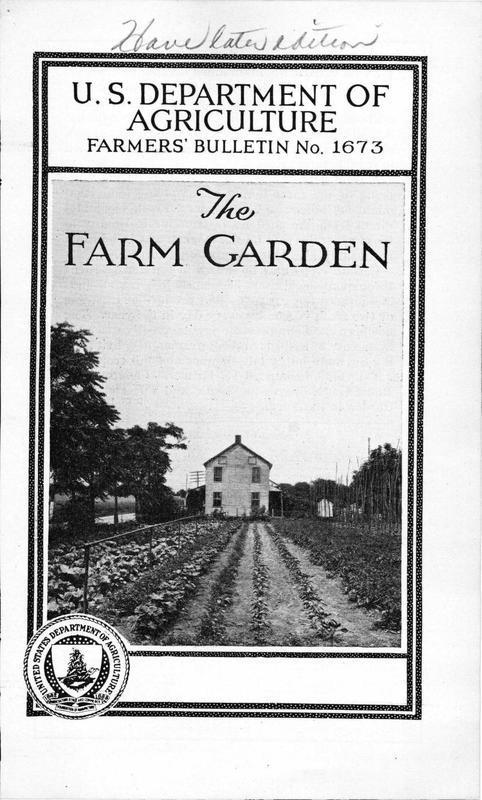Practical Farming Materials for the Homesteaders
El Monte Federal subsistence homesteads. Seventeen dollars and seventy cents rent to apply on purchase of three-room house. California, (1936). Dorothea Lange for the U.S. Farm Security Administration/Office of War Information, Photographer. Library of Congress, Prints and Photographs Division. LC-USF34-001671-C.
The U.S. Department of Agriculture produced many materials designed to help the small-scale farmer. Here is a sample most relevant to the Subsistence Homestead Program:
Planning A Subsistence Homestead (1934)
Wilcox, Walter W.
Farmers' Bulletin: Number 1733.
"MANY FAMILIES with small incomes can lower their living costs by living on a small piece of land and growing their own food, and at the same time enjoy a greater quantity and variety of fresh and canned vegetables and fruit. Gardening and poultry raising on a small piece of land is about all an employed man and his family can care for by hand. About 1 acre of good land is enough for such purposes.
But if the family wants to keep a cow and plans to buy the necessary winter feed, 2 acres of good pasture land, in addition, should be enough, and the extra work will not be excessive.
Men employed only part time or short hours who have large families and small incomes may find it economical to keep a milk cow, or milk goats, and some pigs, and raise the necessary feed in addition to having a garden and keeping poultry. This plan means the use of horse or mechanical power and should be tried only after experience and careful consideration.
Some families are so placed that their best plan involves obtaining a fairly large acreage of cheap land for general farming. In many areas this cheap land is extremely poor and has failed to yield a reasonable living under any kind of farming. For this reason extreme care must be exercised in selecting a so-called cheap farm."
Subsistence Farm Gardens (1936)
Beattie, W.R., Roberts, J.W., Harter, L.L., and White, W.H.
Farmers' Bulletin: Number 1746.
"VEGETABLE GARDENS are an important factor in any subsistence-farming enterprise on account of the large amount of food that can be produced on a small area devoted to vegetables. Fruits, while not of as great food value as vegetables, are essential because they add variety to the diet. Combined with poultry and dairy products, and, under certain conditions, the production of the home supply of meats, the garden and orchard will furnish a large part of the family living. Furthermore, when a family grows its own fruits and vegetables more liberal use of these essential foods will be made than when the supply must all be bought in the market.
Under most conditions one-half acre planted to miscellaneous vegetables, one-half acre in fruits, and one-fourth acre in potatoes or sweetpotatoes will supply the average family with the greater part of this class of food that they will normally consume. Where the entire subsistence homestead operation is limited to an acre at least one-half of the area should be devoted to the garden and small fruits, but whenever the plan includes 3 to 5 acres, 1 1/2 to 2 acres can be profitably used for the production of fruits and vegetables. This, however, will include a limited number of trees of the standard tree fruits.
Men who are employed only part time or short hours will have ample time during the spring and summer months to plant and tend a garden. Careful records have shown that under favorable conditions the time spent in the garden yields a return equal to that obtained for a corresponding period of time devoted to regular employment."
The Small Vegetable Garden: Suggestions for Utilizing Limited Areas (1917)
U.S. Department of Agriculture
Farmers' Bulletin: Number 818.
"BY THE exercise of care and forethought in planting succession crops and rotations and by the utilization of every foot of available space it is possible to grow considerable quantities of vegetables on limited areas and so supplement the family food supply. The principal factors in accomplishing this are the use of seed boxes and hotbeds to give plants an early start in spring before" seeds may be planted outdoors, the use of outside seed beds to carry plants for main-season crops while early crops are occupying the garden space, and the planting of late or succession crops as soon as earlier plants have been removed.
In order that gardening may be carried on successfully in such an intensive way it is especially important that soil of good texture be available, and that it be well supplied with humus and plant food. It is essential also, as in all gardening, that sufficient moisture be present, that the garden be kept free of weeds, and that the soil be cultivated frequently and well.
In the following pages specific suggestions are made for planning an intensive garden enterprise, for preparing the soil and maintaining its fertility, and for planting and growing the crops."
The Farm Garden (1931)
Beattie, James H. and Beattie, W. R.
Farmers Bulletin: Number 1673.
"FARM GARDENS, maintained on about four-fifths of the farms in the United States as a source of wholesome family food supply, are annually saving millions of dollars for the farmers of the country. A well-cared-for garden will yield a greater return per acre than any similar area on the farm devoted to regular farm crops.
A good garden adds very materially to the well-being of the farm family by supplying foods that might not otherwise be provided. Fresh vegetables direct from the garden are superior in quality to those generally sold on the market, and in addition are readily available when wanted for use.
Certain crops may be grown in southern gardens throughout the winter; in fact, there are thousands of southern farm gardens that produce at least one or two fresh vegetables every day in the year. The northern gardening season may be greatly extended by the use of of hotbeds and coldframes, also by planting the more hardy late-summer and fall crops."
The City and Suburban Vegetable Garden (1918)
Conolly, H. M.
Farmers Bulletin: Number 936.
"THIS BULLETIN is intended primarily to show the importance of gardening in city and suburban districts and to encourage greater efforts in these sections.
City gardening in back yards and vacant lots may be made the source of considerable profit and furnishes healthful exercise for the members of the family.
Gardening under the conditions that exist in cities and towns is essentially different from gardening in the country, in that city people as a rule are not experienced in the art of growing plants.
Proper organization and instruction are essential to get the most out of city gardening. In the following pages suggestions are given for conducting the work of organization, as well as directions covering the preparation of the soil, the starting of plants, and the cultivation and care of all the more important garden crops."
 An official website of the United States government.
An official website of the United States government.


